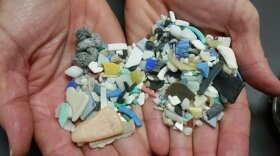-
Investigators in Michigan and elsewhere find low-level contamination of “forever chemicals” virtually everywhere, but the state says it can’t always afford to figure out exactly how the chemicals get into the environment.
-
The University of Toronto researcher, Chelsea Rochman, says the team is working to understand how microplastics change over time in the Great Lakes.
-
Michigan ranked among the top 20 states in a report scoring each state on susceptibility to environmental risks and comprehensive clean energy policies, a much higher ranking than neighboring Indiana and Ohio but similar to Wisconsin.
-
Meanwhile, the Trump administration is moving to roll back rules on greenhouse gases and exempt oil refineries, chemical manufacturers and others from clean air regulations.
-
After sitting for more than a decade, cleanup of a contaminated superfund site in northern Michigan will pick back up, thanks to some federal funding.
-
Michigan and Ohio are both struggling to reduce the fertilizer runoff getting into Lake Erie which feeds cyanobacterial blooms, also called harmful algal blooms. Those toxic blooms can be hazardous to people and animals. Both states are working toward a 40% reduction goal set by the U.S. Environmental Protection Agency. Canada is working toward that same amount of reduction. So far, the efforts are not meeting the goals.
-
The report found that polluters underestimate the long-term costs of these control methods. But it's still cheaper for polluters to implement band-aid fixes on contaminated sites.
-
The state estimates more than 330,000 septic systems are failing in Michigan. A new loan program aims to make it more affordable for residents to replace faulty systems.
-
Hotter days make heat exhaustion a greater hazard for kids. Hotter days also can mean more ozone pollution and that leads to lung impairments. Unusual weather events, particularly storms that cause flooding, add stress to children's lives.
-
Lawmakers have drafted a package of bills that they say could make Michigan a regional leader in microplastic pollution monitoring and prevention.
Play Live Radio
Next Up:
0:00
0:00
Available On Air Stations









